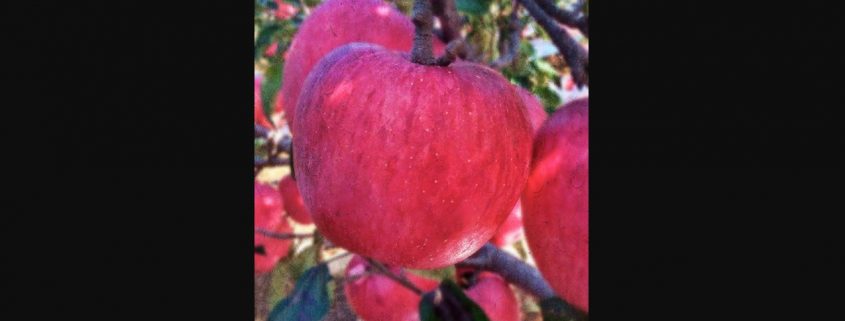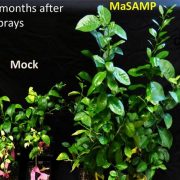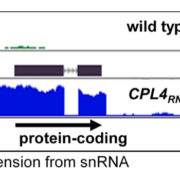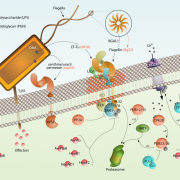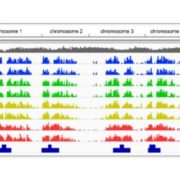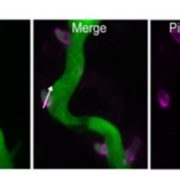Towards Pathogen-Resistant Apples
Zhang et al. show that a single-nucleotide polymorphism in a hairpin RNA promoter contributes to Alternaria alternata leaf spot resistance in apple and could serve as a marker to distinguish susceptible versus resistant apple cultivars. https://doi.org/10.1105/tpc.18.00042.
Background: Apple Alternaria leaf spot is one of the most devastating fungal diseases of apple. Chemical treatments are commonly used to control fungal diseases, but such treatments may harm the environment and pose a risk to human health. The most effective solution to this problem is to select pathogen-resistant apple resources and to develop pathogen-resistant varieties through breeding.
Question: We were interested in determining how to select pathogen-resistant apple resources and how to develop pathogen-resistant varieties through breeding.
Findings: In our study, we uncovered a mechanism in which the presence of a single nucleotide polymorphism (SNP) in the promoter of a specific hairpin RNA contributes to Alternaria leaf spot resistance in apple. In susceptible apple varieties, the transcription factor MdWHy binds to the promoter of the hairpin RNA, pMdhpRNA277, following infection by Alternaria alternata f. sp mali (ALT1), leading to the production of small RNAs that target five resistance (R) genes (MdRNL1, MdRNL2, MdRNL3, MdRNL4, and MdRNL5), resulting in susceptibility to Alternaria leaf spot. In resistant apple cultivars, the SNP in pMdhpRNA277 prevents its binding by MdWHy, thereby reducing small RNA production and allowing the R genes to be expressed at high levels. This SNP is associated with Alternaria leaf spot resistance in various apple cultivars and in the progeny of three additional crosses, suggesting that it could be used as a marker to distinguish between apple varieties that are resistant or susceptible to Alternaria leaf spot.
Next steps: The five R genes promote resistance to ALT1 in resistant apple varieties following infection. These genes encode members of the CCR-NB-LRR subfamily, a small subclass of the NB-LRR protein family. Thus, it would be worthwhile to investigate how CCR-NB-LRR proteins contribute to resistance to Alternaria leaf spot in resistant apple varieties.
Qiulei Zhang, Chao Ma, Yi Zhang, Zhaoyu Gu, Wei Li, Xuwei Duan, Shengnan Wang, Li Hao, Yuanhua Wang, Shengyuan Wang, Tianzhong Li. (2018). A single nucleotide polymorphism in the promoter of a hairpin RNA contributes to Alternaria leaf spot resistance in apple (Malus × domestica Borkh.). Plant Cell Published July 2018. DOI: https://doi.org/10.1105/tpc.18.00042.


